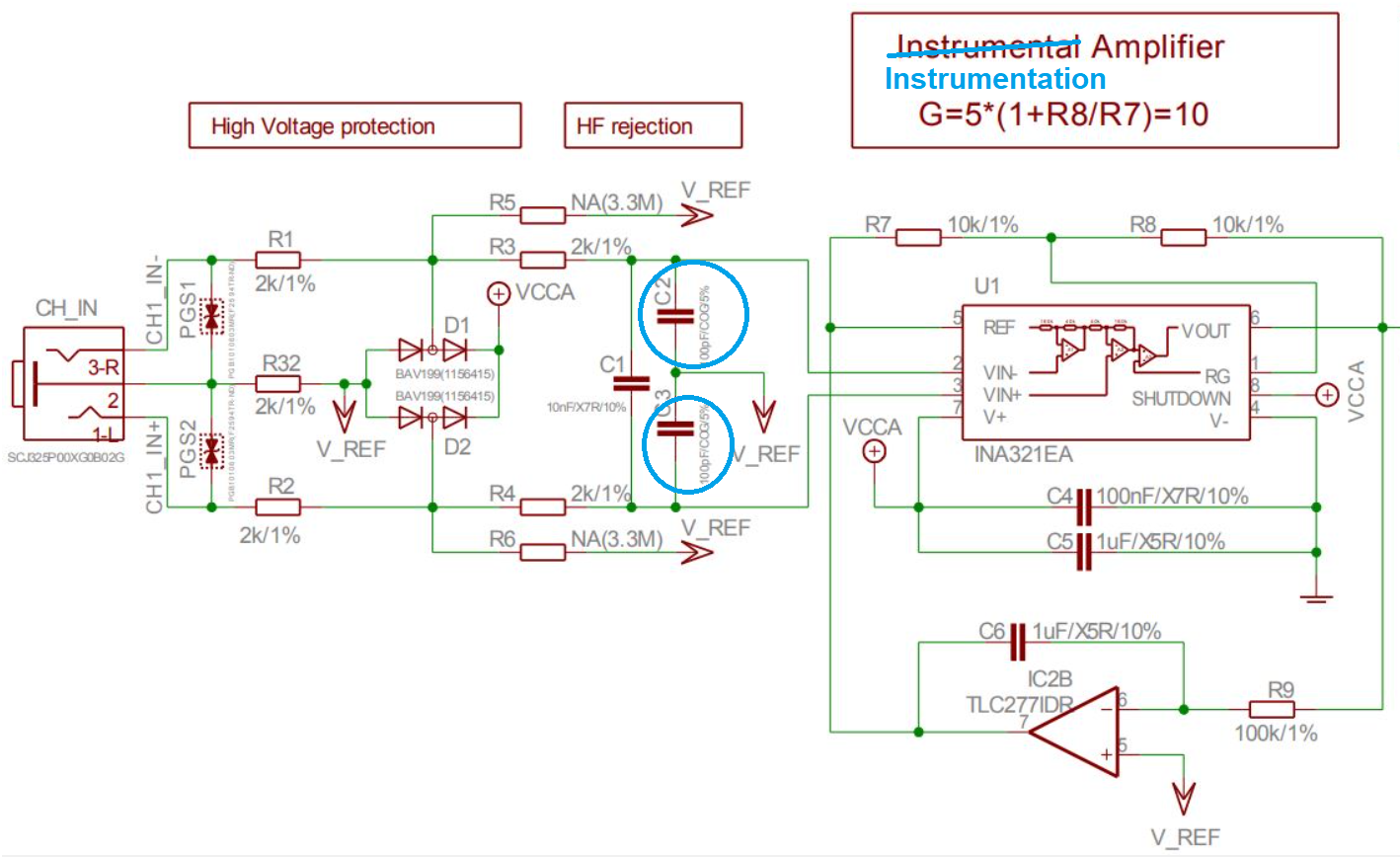I want to avoid building a large Faraday Cage that can costs thousands of dollars. So I plan to just use RFI filters in the differential input stage of my bioamplifiers or any I'd use without any filter to avoid clipping the output or any nonlinear effects. I saw this RFI filter used by Olimex.
 https://www.olimex.com/Products/Duino/Shields/SHIELD-EKG-EMG/resources/SHIELD-EKG-EMG.pdf
https://www.olimex.com/Products/Duino/Shields/SHIELD-EKG-EMG/resources/SHIELD-EKG-EMG.pdfIt uses simply low pass RC filters. Is it already the optimum design? Can you give other designs used in other amplifiers? How can one add for example ferrite beads into it? My observations:
1. The capacitors in each common mode input must be exact or tolerance of 0.001%. If they differ, it can introduce differential signal. For the differential capacitor. I guess any will do.
2. To look for resistor and capacitor i'll use in both common mode (C2, C3) and differential (C1). Must I focus on the frequency only and not so much on the voltage? For example. My maximum input is only 10mV. So I can use the same resistor and capacitor in the low pass RC filter used in say 10000V equipment if the frequency cutoff is the same?
3. If the source of the interference is line and radiated. The filter can filter both? My focus is filtering radiated intereference because I only used batteries.
4. Should I look for cutoff in the 1Mhz region or all above 10kHz? What values of resistor and capacitor must I get? One with tolerance of 0.0001% to avoid causing differential signal in the mismatch.
5. In a Faraday Cage. What is the minimum frequency it can allow? Please give picture of an actual table size Faraday Cage. I want to know how opaque it is or transparent and how you insert your hands inside the cage.
Thank you.